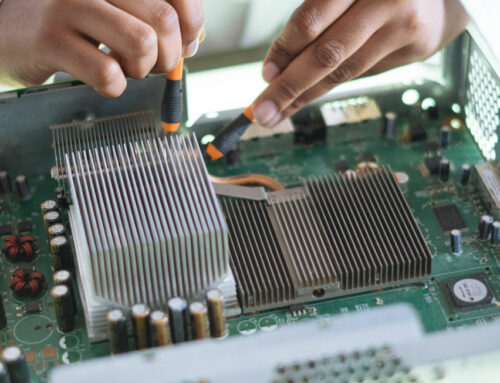What Are Wireless Mesh Networks?
A wireless mesh network (WMN) is a wireless network that is made up of an interconnection of devices such as mesh clients, mesh routers (or nodes) and gateways. Rather than the small number of wired access points used by a traditional network, a wireless mesh network uses wireless mesh nodes to share the network connection.
The infrastructure for a WMN is essentially a network of routers without the cabling in between them. These nodes make up the “mesh” of the wireless mesh network.
They Are Intelligent
The nodes communicate with one another to spread the network connection across a large area. WMN nodes do this by breaking the distance up into a series of short hops.
The nodes used to pass along the data from origin to destination boost the signal and forward the data efficiently. They use their knowledge of the network to make forwarding decisions and perform routing accordingly.
They Are Reliable
What’s interesting about WMNs is that they are self-configuring and self-healing. WMNs are also reliable and redundant by design. If a node fails, the other nodes can continue to communicate through the network, if not directly then through intermediate nodes.
WMNs aren’t restricted to a specific technology or protocol and can work with many wireless technologies:
- 802.11
- 802.15
- 802.16
- Cellular technologies
They Are Low-Maintenance
Once they’ve been set up, they require little effort to keep them up and running. WMNs are pretty stable, except in the event of a node failure or the addition of new nodes to the network. Traffic is aggregated from a large number of end users and flows between arbitrary pairs of nodes.
They Are Wireless When Wires Are Scarce
One problem that WMNs solve, in particular, is covering a large area where Ethernet isn’t available to allow wired connections. A WMN can cover a multi-floor dwelling or office or about 1000 square feet on one floor. It’s also adaptable and expandable. As coverage needs increase or decrease, nodes can be added or removed.
Another problem solved by WMNs is providing network connection in areas where wired connections are hard to find, like outdoors or in large spaces like warehouses, parking garages or sports stadiums.
Or, if you have “dead zones” or areas where you can’t get wireless network access easily using traditional methods, the flexibility of WMNs can help. Just add nodes to cover the area until it’s connected.
They Are Efficient
Rather than simply retransmitting data, WMNs dynamically adjust radio attributes and channels to achieve the least interference and greatest coverage area. This results in a high-level of throughput. Far higher than wireless distribution systems or other broadcast-style systems.
For public safety and emergency response, reliable, high-level throughput across large areas is essential. For coverage over a large geographic area with high-speed mobility and high-quality video surveillance, WMNs are ideal.
The Future of WMNs
So, what’s the future for this futuristic wireless network? Most likely it’s to create nodes that have more features and abilities than those on the market today. Some wireless mesh nodes available now come with Bluetooth for configuration. Others have personal area networking control. And nodes with up to three WiFi radios that cover the full range (802.11a/b/g/n/ac) exist as well.
Potentially, nodes with more radios and the ability to beamform (concentrate the signal and aim it at the target) could be the future of WMNs. This technology could be used to separate node-to-node traffic from device-to-device traffic. Perhaps WMNs could gain the capability for superfast ultra-high-definition streaming with 802.11ad/Wi-Gig? Or integration with smart home devices and networks?
For Now
WMNs offer a lot of promise but are still fairly new and haven’t been fully tested to determine their limitations. However, while they are mainly used in the home so far, WMNs for small office spaces are also hitting the market. Depending on the size of your home or office, perhaps WMNs offer you an easy and affordable wireless solution.




